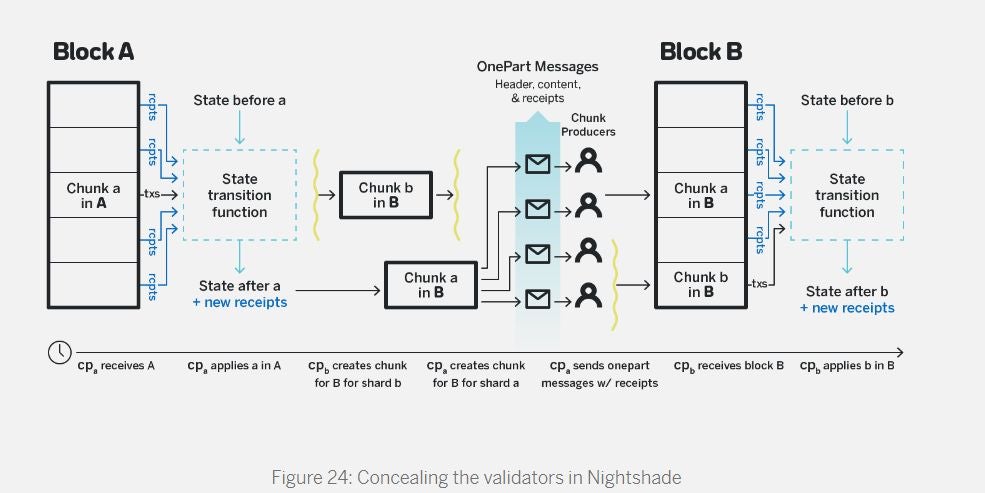Blockstack 
Blockstack is an open-source and developer-friendly network for building decentralized apps and smart contracts. Blockstack introduces a new mining mechanism, Proof-of-Transfer(PoX) which allows for a Proof of Work chain (in Blockstack’s case, Bitcoin) to be leveraged and extended. This opens up a wide range of opportunities for developers to build ontop of Bitcoin Network.

A diagram I did recently to illustrate the idea behind PoX, which allows stacks protocol to anchor on the Bitcoin Network, while bringing smart contract capabilities to the network. This addresses some of the main limitations of the Bitcoin Network, where 1) it has a limited scripting language, thus developers are unable to build complex applications on it, 2) issues with scaling and transaction speed. With Stacks protocol, it brings clarity programming language to Bitcoin network, and vastly increases the transaction speed on the blockchain.
Why do I like it?
Bitcoin network has the strongest network effects in the industry thus making it the most secure blockchain, with Blockstack’s PoX mechanism it solves the limitations of Bitcoin network Programmability & Scalability. As developers start building on Stacks protocol, anchored(secured) by the Bitcoin Network, it allows dapps, DeFi, digital assets, insurance and many other functions of our lives to move onto blockchain, where users have full control of it and with the best possible security.
Mining btc becomes more accessible, as regular users no longer require specialized hardware or huge capital outlay to start mining btc. The interplay between stx token, btc through PoX allows users from all walks of life to participate in securing the network and mine btc, stx tokens.
A thoughtful community who contributes relentlessly to the project alongside Blockstack PBC members who were very inclusive and transparent about the work going on at Blockstack. This creates a conducive community for people who are in it for the long term to discuss ideas, tinker on side projects that benefits the large stacks ecosystem and the blockchain industry.
Celsius Network 
Celsius Network harnesses blockchain technology to provide unprecedented financial freedom, economic opportunity, and income equality, with an interest rates of 3% – 11% on your digital assets, just like how a bank would give you interest on your deposits. Celsius business model is structured to do the exact opposite of what banks do — by giving 80% of total revenue back to Celsius community each week in the form of earned interest. Celsius earn profits by lending coins to hedge funds, exchanges, and institutional traders, and by issuing asset-backed loans at an average of 9% interest. By taking the exact same 80% profit margin that banks have kept for themselves for centuries and returning it to Celsius community of depositors.

Why do I like it?
While comparing to a savings account provided by a bank where interest rates ranges from 0.8% – 1%, Celsius is giving out 4% – 5% interest rate on Bitcoin/Ethereum and ~11% on USDC/Tether(stablecoins). That is a deposit of $1,000 worth of USDC on Celsius, the interest earned is equivalent to $10,000 deposited in a fixed deposit in a bank.
Celsius team have been very transparent with key metrics of the project, which allows the community to build a stats page for Celsius showing in-depth details about the protocol. Celsius co-founders have also been proactively answers questions that the community may have on weekly AMAs.
Celsius community have been really welcoming, constant sharing of best practices and tips on good financial habits.
Near Protocol 
NEAR is an open source platform that accelerates the development of decentralized applications. It allows developers and entrepreneurs to easily and sustainably build applications which secure high value assets like money and identity while making them usable enough for consumers to access.
Near Protocol strives to build a decentralized cloud solution for developers to build applications upon. Much like how AWS and Microsoft Azure are centralized cloud solutions that powers most of our software today. Near’s vision is to build a community cloud infrastructure that solves the current limitations of decentralization: usability, scalability and security.
Near’s community cloud infrastructure uses a novel consensus algorithm and a scalable sharding architecture to achieve its intended outcome of usability, scalability and security.
- Sharding: The system is designed to scale horizontally and near-infinitely by distributing computation across multiple parallelized shards.
- Consensus: Consensus is achieved across all of the nodes which make up the network operators across all of the shards using the new Nightshade algorithm.
- Staking Selection and Game Theory: To participate in the validation process, stakers are selected using a secure randomized process which optimally distributes seats across parties and provides incentives for them to operate with good behavior.
- Randomness: NEAR’s randomness approach is unbiasable, unpredictable and can tolerate up to 1/3 of malicious actors before liveness is affected and 2/3 of malicious actors before any one can actually influence its output.

Why do I like it?
Technically strong team at Near, solving for some of the toughest problem in the blockchain space: usability, scalability and security. Developer focused, constantly striving to build better tools for developers to use on its protocol. In my opinion, attracting great developers will be key to user adoption as greater developers produces killer apps on the protocol, which will be able to attract users to its platform.
Infinity scalability, thus translates to infinite storage capacity on the network, through its sharding mechanism(Nightshade). The internet in my opinion is an infinite space that is ever expanding, thus the ability to provide infinite scalability solves a fundamental problem in infrastructure solutions, which reflects the infinite potential of Near protocol.



